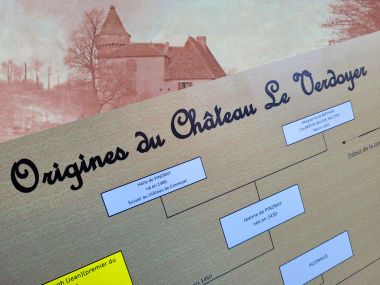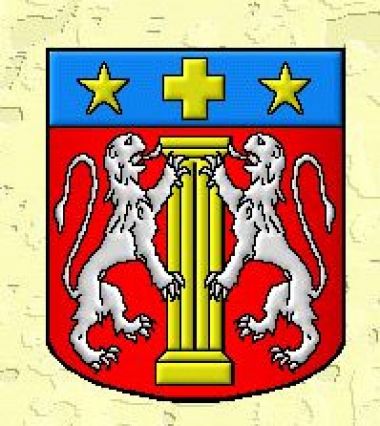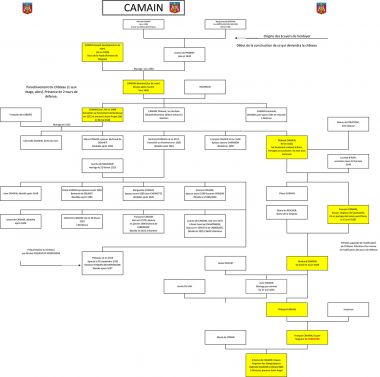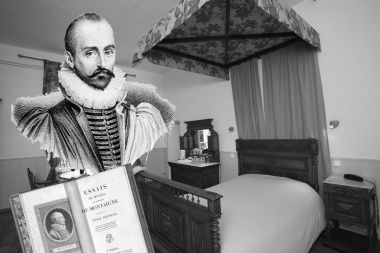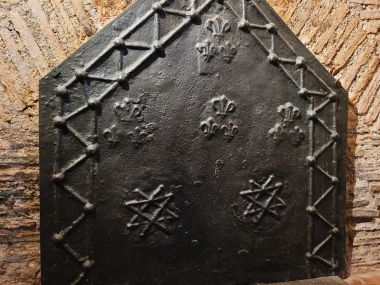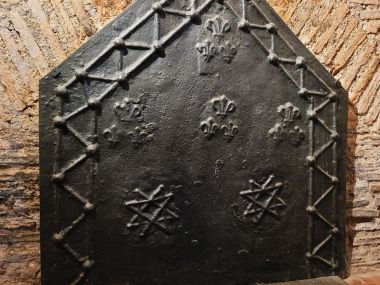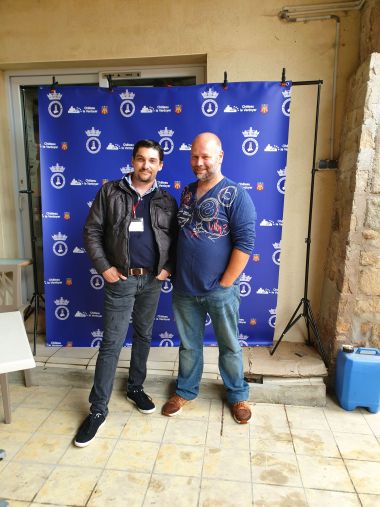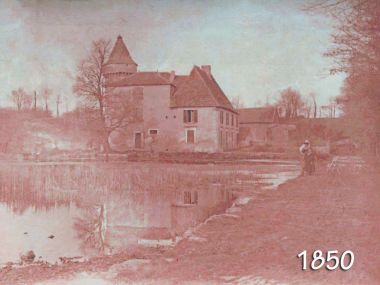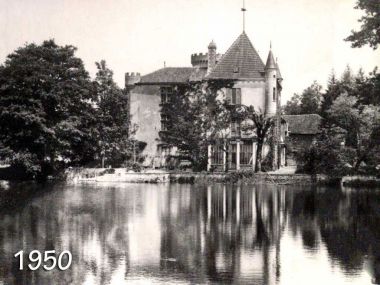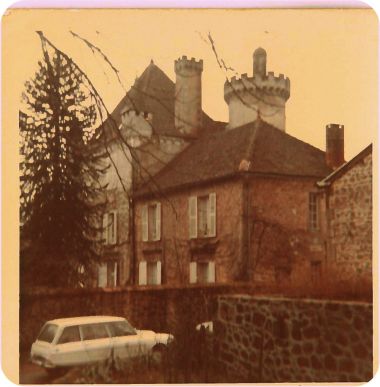"What is the history of the castle? »…
"What is the history of the castle? »… This question has indeed been asked hundreds, thousands of times over the years…
The bookwriter Raphaël GRANGIER, who wrote 2 books whose action takes place in part at Le Verdoyer, and who helps us organize the Book Fair, every year in July, has succeeded in reconstructing the first centuries of occupation of the castle , and provided us with this nice story:
Once upon a time…
Well, the Château le Verdoyer campsite. A flowery and pleasant setting where it is good to put your body and suitcases for a while. But do you know his history? No…
So let us tell you in a few words.
For that, you have to close your eyes and dive with us, in 1385. Périgord is wooded, sparsely populated and we are just after the second phase of the Hundred Years War, at the moment Charles V launches his reconquest from France.
Finances are at their lowest there, but the monarchy is still there. On the paths between Saint Pardoux La Rivière and Nontron, one encounters carts full of hay, drawn by a pair of oxen.
A stone's throw away, on the domain of Connezac, Hélie de Pindray was born that year and became later squire at the castle. Given his cavalry faculties, he was honored by the lord of Connezac who gave him his permission to celebrate his marriage with the commoner Marguerite de Bertin.
In 1430, ennobled by the Lord, our young citizens become parents to a young girl whom they would call Jeanne.
The Lord of Connezac offers his first squire a farm and a piece of land that extends from Mazerat to Saint Saud, to the edge of the parish of Nontron. This farm becomes a hunting ground and the son of the noble Camain, Joseph, now lord of La Prade, often comes to hunt there.
An ideal wedding opportunity between Jeanne and Joseph starts from this regular visit, which her parents quickly organize.
To mark this union, the first version of the castle was then built. A medieval edifice promoted by shootingholes and defensive towers, in one storey and in one piece, which will be completed at the moment of the birth of their son Bertrand (1st of the name), around 1450.
Bertrand gives the castle and the title of nobility to his only son, Jean, for his marriage to Françoise de Laborie.
A great feast is given to which the noble of Nontron and Saint Pardoux, the priests, abbots are invited. Jean Camain then decides to stay more on his land because the trips to Bordeaux exhaust him.
By descent, his son Bertrand (2nd in name) also entered parliament, as did his father, while Thibaud, born 8 years after him, distinguished himself by entering in Brive as a police lieutenant.
Bertrand married Jeanne de Maucamp, daughter of a Bordeaux nobleman, in 1552, and bore her not two, not three or four, but nine children. The latter was straight about his poor mother's life when he was born. Of all these young Camain, the eldest, born at the marriage of his parents, whose first name was given as a sign of respect for his uncle (Thibaud), married a certain Eleonore Eyquem de Montaigne, sister of the famous writer Michel Eyquem de Montaigne who took advantage of this union for almost thirty years to regularly take his suitors to the Château du Verdoyer.
As for Thibaud, but uncle this time, he married Bonne de Pourtenc for the first time, who soon died of an illness. He then married Lucretia d'Alby in 1545, prompting him to restore the castle to its former glory. Lucrèce gives him two boys, one of whom remains single: Pierre Camin. His other son François shares Thibaud's inheritance and is pushed into the nobility by Lucrèce to marry Marie du Pescher, and in honor of his marriage she convinces him to have the castle adapted in a more Renaissance style and raise a floor.
During construction, the southwest tower caught fire. The fire was brought under control, but the crenellated tower was damaged. Losing his mind, Lucrèce assigns the fire to the other branch of the family, who see the renovation as a waste of money and a brake on the parties. The work is almost done and the whole family is reunited, but the rivalry of the two Camain branches will cause the meal to end in threats.
The siblings of the other Camain line: Etienne, Marguerite, Marie, Catherine, Jeanne and Thibaud, Eleonore's husband, offer François a fireback, in which Lucrèce only sees threats because it depicts the alchemy symbols. No one knew if she was right or wrong, but Lucrèce died of poisoning (sepsis) shortly after.
The two lines never reunited after this meal. Francois and Marie du Pescher had only one son: Bertrand, so named in honor of his grandfather. He married Louise Mallet who gave him two sons: Jean and Thibault. The inheritance was given to the elder Thibault, who later married a young woman of whom no trace has yet been found. Their only son also took the name of his grandfather François and received from the royal court and the bishop of Angoulême the title of squire, lord of Verdoyer. With his wife Marie du Conan, they had a boy, Antoine de Camain, squire, lord of Verdoyer and lord of the ponds, who married Gabrielle Saunier on 3 December 1691 in Mazerat.
Here is a lineage that covers nearly three centuries of the castle's history.
Exciting, right? We have yet to discover how this castle changed hands until being in the Ausems line for nearly 40 years now.


